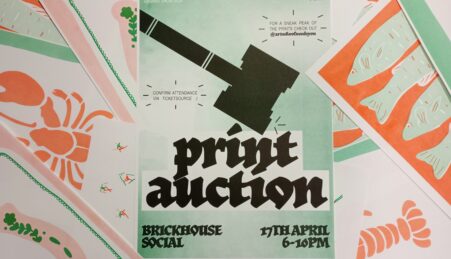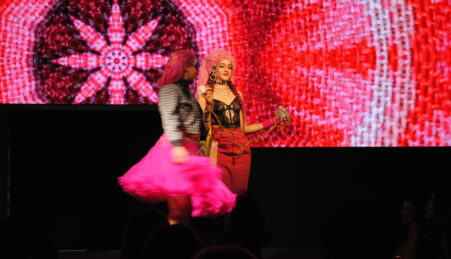By Pierangelly Del Rio
The RAH! 2018 programme continued this week with Arts&Heritage: contemporary arts practice in heritage sites.
The event presented the work done by Arts&Heritage, an agency based in Northumberland that occupies the intersection between contemporary art practice and the heritage and museum sector. Dr Jenna Ashton, Research Impact and Public Engagement Manager and RAH! co-ordinator, welcomed attendees to Manchester Met and introduced Arts&Heritage director Judith King.
Arts&Heritage works nationally in partnership with the National Trust Fund and seeks to connect contemporary arts to museums, heritage and non-arts organisations through commissions that resonate with context and history.
In 2016, the North of England was declared to be at risk of becoming a “cultural wasteland” as austerity measures forced town hall leaders to cut funds for museums and heritage sites, resulting in the closing of a significant number of such establishments. The work of Judith King and her co-director Timandra Nichols, presents an alternative to spark the interest in museums and Heritage sites through creativity and building a conversation with the artist, the past and the present.
Talking to attendees, Judith King explained the Arts&Heritage work in detail. She said, “In 2015 we applied for the arts council museum resilience fund to work with museums, to support them in commissioning artists to work within their collections. The programme consisted of workshops; it also consisted in going to art studios, it was also a day where seventy-two artists, writers, performers, and dancers came together and listened to the museums about what their collection was, and about their opportunities for artists.”
The result of that day was ten museums creating commissions and ten artists from a variety of disciplines responding to them. The artists attended Arts&Heritage: contemporary arts practice in heritage sites and were invited to showcase their work through a short film and a presentation.
Among the speakers was Matt Stoke, creator of “This Liberty”, a cinematic and audio installation inspired by the oldest purpose-built prison in England, Hexham Old Gaol. Drawing from traditional border ballads, which were typically sung unaccompanied and used to tell stories, This Liberty consists of five new songs, each telling the story of a different character associated with the 687-year-old building. Stoke explained: “One of the most important things from an early stage of the commission was creating five new songs that would look at the stories of the people who went through that building, whoever they are, the prisoners; the jailer. And very much looking at the personal experience of each of those people as they interacted with the building.”
Following next was “Luminary” a series of new contemporary artworks at Gawthorpe Hall by visual artist Serena Partridge. Luminary takes inspiration from the life and textile collection of Rachel Kay-Shuttleworth, the original owner of the ancestral home. Despite her notorious wealth, Miss Rachel was an active philanthropist and engaged with several communities throughout her life. “I decided to bring the community into the project,” Partridge commented. Luminary involved workshops with children and adults experimenting with textiles, with the aim of keeping alive Miss Rachel’s radical and pioneering approach to the craft.
Similarly, the influential Sir Robert Ropner, inspired the next installation. “Refuge: Ropner’s Ghost Ship” was created by Stephen Dixon and Alison Welsh and is a large multi-media sculpture exploring Ropner’s the ship building legacy. Born in Prussia, Ropner arrived in the North East in 1857 as an impoverished teenager looking to make a fortune. During his time in England, he became a successful shipbuilder and the Mayor of Stockton. Dixon commented on the impact of Ropner’s personal journey while creating the installation: “We were really interested in his story, coming just from the Brexit vote, and the North East came very much for Brexit. We saw something of a story and a message from Robert Ropner’s life.”
‘Time in the Ice House’, created by David Appleyard and exhibited in the Norton Priory Museum and Gardens, closed the session. This experimental installation celebrates the museum and its monastic past. The museum’s Georgian Ice House was home to a large-scale, experimental ice bell that, as it melted, released objects and played sounds. However, as Appleyard commented, there wasn’t any ice for a long time. Nowadays, the installation consists of singing bowls sat under the large ice sculpture marking the release of an object with a sound. “I’ve been preoccupied with the idea of time for quite a while and I’ve been interested in medieval measures of times, beeswax candles, and water clocks,” Appleyard explained. “The tenants measured the time to meet eight times per day, to meet and pray.”
Arts&Heritage’s goal is to continue expanding, with the process for new commissions starting in May. Meanwhile, three major architectural commissions based in folly building are set to open this year.
Upcoming events of the RAH! Programme include Green Noise and Gravestones: A Reading of Poetry and Prose on Monday 5th March and Sylvia’s Sisters on the 8th.





Leave a reply